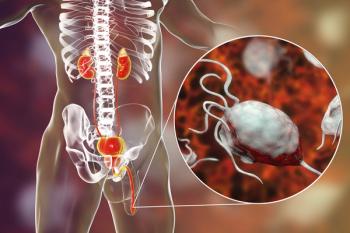
FDA Accepts NDA for Vepdegestrant in ESR1-Mutant ER+/HER2– Breast Cancer
The decision is based on phase 3 VERITAC-2 trial data showing a significant PFS improvement vs fulvestrant in ESR1-mutant ER+/HER2– breast cancer.
The FDA has accepted a new drug application (NDA) for vepdegestrant (ARV-471) for the treatment of patients with estrogen receptor (ER)–positive/HER2-negative ESR1-mutant advanced or metastatic breast cancer previously treated with endocrine-based therapy, according to a news release from the drug’s developer, Arvinas.1
Results from the
The FDA has set June 5, 2026, as the Prescription Drug User Fee Act action date.
Data from the trial presented at the
Additionally, the median duration of response in either arm was not reached as of data cutoff and the overall survival (OS) data were immature. The clinical benefit rate (CBR) by BICR in the vepdegestrant arm was 42.1% vs 20.2% in the fulvestrant arm, with an OR of 2.88 (95% CI, 1.57-5.39; P < .001). The objective response rate (ORR) by BICR in the respective arms was 18.6% and 4.0%, with an OR of 5.45 (95% CI, 1.69-22.73; P = .001).
“Patients often [have] limited treatment options after first-line treatment, and vepdegestrant demonstrated improved PFS in patients with ESR1-mutated [ER-positive/HER2-negative] advanced breast cancer,” John Houston, PhD, chairperson, CEO, and president of Arvinas, stated in the news release.1 “With the efficacy and favorable tolerability seen in [the phase 3 VERITAC-2 trial], we believe vepdegestrant, if approved, has potential to be a best-in-class treatment option for patients in the second-line ESR1-mutant setting.”
Patients enrolled in the trial were randomly assigned 1:1 to receive 200 mg of daily oral vepdegestrant or 500 mg of fulvestrant intramuscularly on days 1 and 15 of the first cycle and day 1 of subsequent cycles. Those treated were 18 years or older with ER-positive/HER2-negative advanced or metastatic breast cancer who experienced radiological progression during or following the most recent line of therapy. Approximately 80% of patients received only 1 prior line of therapy, comprised of CDK4/6 inhibition plus endocrine therapy, with the remainder receiving 2 prior lines of therapy.
The primary end point of the trial was PFS per BICR in the ESR1-mutant population and in all patients. Secondary end points included OS, which was a key secondary end point; CBR and ORR per BICR; and adverse effects (AEs).
AEs of any grade occurred in 87% of the vepdegestrant arm vs 81% of the fulvestrant arms. Grade 3 AEs were reported in 23% and 18% of the respective arms, and serious AEs occurred in 10% vs 9%. Treatment-related AEs (TRAEs) occurred in 57% vs 40%, respectively, with grade 3 or higher TRAEs occurring in 8% vs 3% of the respective arms.
The most common treatment-emergent AEs (TEAEs) in the vepdegestrant and fulvestrant arms included fatigue (27% vs 16%), alanine aminotransferase increase (14% vs 10%), aspartate aminotransferase increase (14% vs 10%), nausea (13% vs 9%), and anemia (12% vs 8%). The most common grade 3 or 4 TEAEs in the vepdegestrant arm were anemia (2%) and neutropenia (2%), and in the fulvestrant arm, they were aspartate aminotransferase increase (3%) and anemia (3%).
TRAEs leading to treatment discontinuation occurred in 3% of the vepdegestrant arm vs 1% of the fulvestrant arm. Those leading to dose reduction occurred in 2% of the vepdegestrant arm. No treatment-related deaths occurred in either arm.
References
- Arvinas announces FDA acceptance of the new drug application for vepdegestrant for the treatment of ESR1m, ER+/HER2- advanced breast cancer. News release. Arvinas Inc. August 8, 2025. Accessed August 11, 2025. https://tinyurl.com/4nay3xa4
- Hamilton E, De Laurentiis M, Jhaveri K, et al. Vepdegestrant, a PROTAC estrogen receptor (ER) degrader, vs fulvestrant in ER-positive/human epidermal growth factor receptor 2 (HER2)-negative advanced breast cancer: results of the global, randomized, phase 3 VERITAC-2 study. J Clin Oncol. 2025;43(suppl 17):LBA1000. doi:10.1200/JCO.2025.43.17_suppl.LBA1000
Newsletter
Stay up to date on recent advances in the multidisciplinary approach to cancer.






















































































